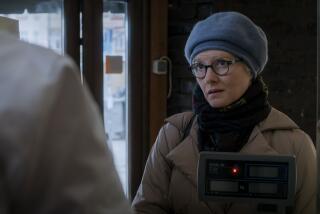Educator Will Finally Get Her Trip in Space
- Share via
SYRACUSE, N.Y. — Sixteen years after Christa McAuliffe and six other astronauts died in the Challenger explosion, NASA announced Friday that McAuliffe’s fellow teacher and onetime understudy Barbara Morgan will ride aboard a shuttle in 2004.
“NASA has an unfinished mission,” Sean O’Keefe, the space agency’s administrator, said during a speech at Syracuse University. “It is time for NASA to complete the mission--to send an educator into space to inspire and teach our young people.”
Morgan, 50, is a former third-grade teacher from McCall, Idaho, who now lives in Houston, where she has trained and worked at the Johnson Space Center since 1998. She has been named the educator mission specialist.
O’Keefe said Morgan’s selection was fitting.
Morgan trained with the Challenger crew and was McAuliffe’s backup. She watched from the launch site when the shuttle exploded Jan. 28, 1986, just 73 seconds into its flight.
Since the accident, Morgan has worked with NASA and science organizations “keeping alive Christa McAuliffe’s inspiration and the dream of an educator in the space program,” O’Keefe said.
Morgan’s mission will be the first of a series of flights in the new Educator Mission Specialist program. O’Keefe said NASA is developing a partnership with the U.S. Education Department and soon will release the details of a national recruitment program for follow-up missions. Each teacher would receive full astronaut training.
“It is vital that we inspire our young people to learn and to teach,” O’Keefe said. “I hope that NASA’s new direction in this area--in the person of Barbara Morgan and those who will follow her--will result in a new crop of young, invigorated educators.”
O’Keefe’s predecessor, Daniel Goldin, approved Morgan’s acceptance as a full-time astronaut Jan. 16, 1998, at the same time he announced then-Sen. John Glenn’s assignment to the crew of an October 1998 shuttle mission.
At the time, NASA critics speculated Morgan was approved to divert criticism of the Glenn assignment. But Goldin insisted NASA was not reviving the old “civilian in space” program, saying the agency was simply “expanding the reach of the astronaut program.”
While O’Keefe did not name a specific flight, he said Morgan will fly in 2004, after the international space station’s solar power system is finished. The appointment is the centerpiece of a program emphasizing education in a bid to attract more students to science and engineering.
Unlike the old Teacher in Space program, O’Keefe said Morgan’s appointment will not be “a one-shot deal, which in a lot of ways the Teacher in Space program was.”
“This will be a case of really dedicating effort to professional educators, who will also be proficient, trained and competent to handle all the other important mission objectives that every astronaut has,” O’Keefe said.
As O’Keefe was making his remarks, Morgan was working in Mission Control at the Houston space center, serving as the day shift’s “capcom”--capsule communicator--the astronaut who relays instructions to the crew aboard the space station. As such, she was not immediately available for comment.
Space station astronaut Carl Walz told a reporter that Morgan’s assignment is “really fantastic and we wish her all the best.”
“Mrs. Morgan is well on her way to space,” O’Keefe said. “NASA and the children of the world look forward to wishing Mrs. Morgan a hearty Godspeed as she lifts off to begin these most important missions at long last.”
More to Read
Sign up for Essential California
The most important California stories and recommendations in your inbox every morning.
You may occasionally receive promotional content from the Los Angeles Times.













